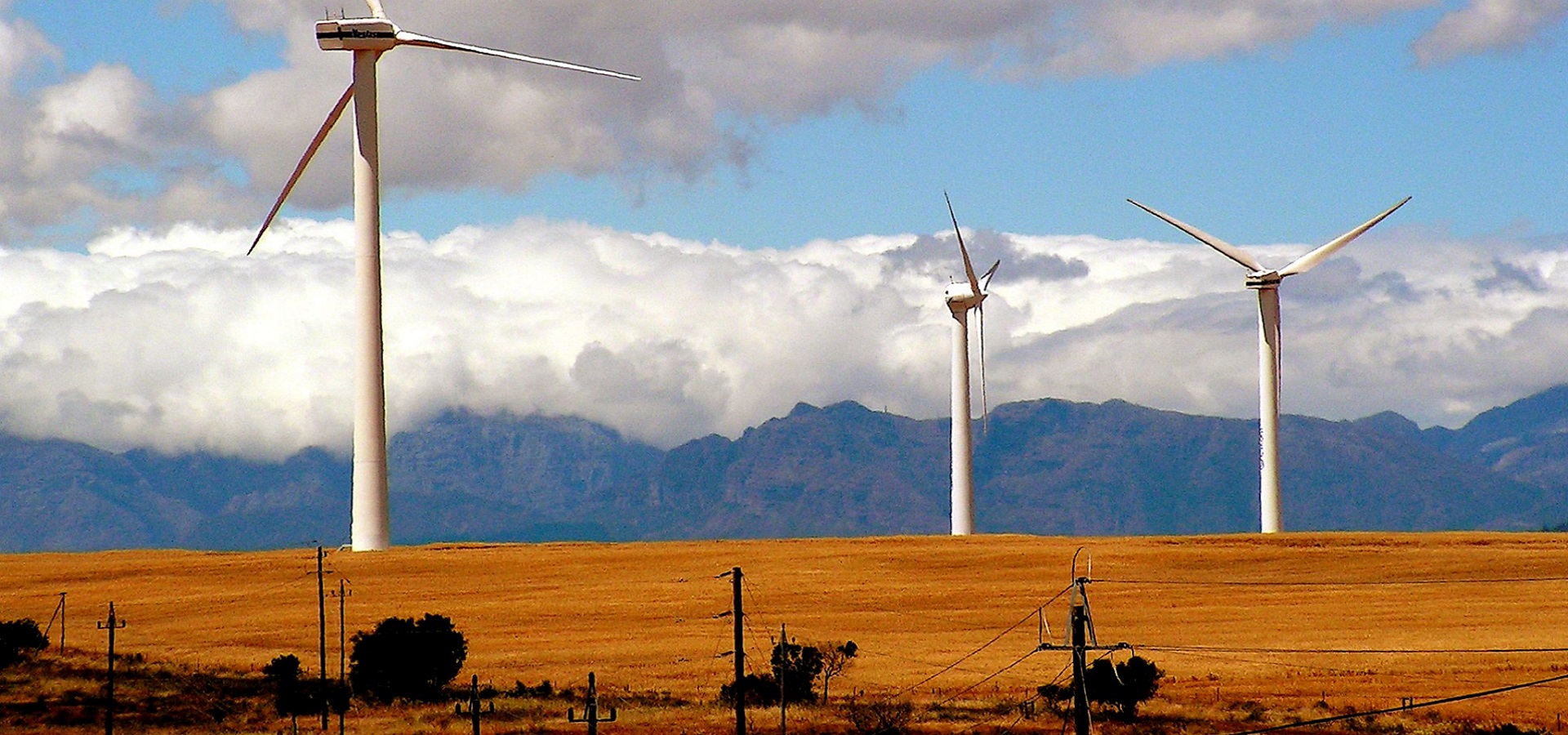As the South African government prepares to inject a stimulus package equivalent to 10 per cent of its GDP into the economy to aid recovery from the coronavirus recession, energy analysts say the time is right to fast-track renewable energy. More than state-funded investment, though, this will need political will and policy that builds private-sector confidence. Leonie Joubert reports.

South Africa must continue to expand wind power in order to ensure electricity supply. (Lollie-Pop, CC BY 2.0)
swiss imatation watch online in high quality.
Around the world, governments are being urged to use their coronavirus economic stimulus packages to accelerate the move towards cleaner, lower-carbon economies. According to local energy analysts, South Africa has an opportunity to do the same, and speed up its inevitable transition to a grid that replaces its ageing coal-fired electricity infrastructure with a greater percentage of renewable energy (RE).
By 2030, the national utility Eskom will begin retiring most of the country’s coal power stations. The government intends replacing this electricity infrastructure with an energy mix that will include 26.5 percent solar and wind power. Energy analysts here have praised this policy, saying it gives a smooth, predictable implementation blue-print that will make it safe for the private sector to invest in local manufacturing, skills training, and building the required plants.
However, the economic recovery response to address the coronavirus recession gives the country an opportunity to scale up this investment ahead of schedule, according to energy analysts speaking at a recent online event organised by the annual wind energy conference, WINDABA, which cannot take place this year owing to the coronavirus.
During the online seminar, leading experts showed the increased job creation potential of a scaled-up RE programme, while also greening key existing carbon-intensive industries and building a ‘green power’ export economy.
Dr Grove Steyn, the managing director of Meridian Economics, who has consulted with government on its energy policy, recently worked with the SA Council for Scientific Research (CSIR) to model the country’s electricity needs and renewable energy potential.
‘Most of Eskom’s existing capacity needs to be retired from 2030, and early results from a study we have done with the CSIR show that the energy sector in South Africa can provide a large green stimulus recovery in a post-coronavirus era,’ Steyn told the online audience.
‘Renewable energy is the cheapest form of energy and will be key to our future development path.’
In the wind sector alone, the government’s target is to see 1.6 gigawatts (GW) of wind power installed per year by 2030.
This will involve an investment of R300 to R400 billion in the next decade, according to energy consultant Dr Tobias Bischof-Niemz from ENERTRAG AG, and formerly with the CSIR. These wind farms are expected to create almost 17,500 jobs in construction and 7,000 jobs in operations.
However, if the state almost doubled this target to 3 GW of new-build wind capacity per year until 2030, the investment could amount to R800 billion in total, while creating 35,000 construction jobs and 14,000 permanent operational positions.
These new jobs would be similar to the number of jobs currently offered by Eskom, which employs about 40,000 people.
The economic conditions are already suited for increasing this ambition on renewable energy investment: the cost of Eskom’s coal generation now sits at 37 cents per kilowatt hour (kWh), while wind and solar are approaching 40 to 60 cents per kWh.
‘If you add the carbon dioxide costs to the cost of Eskom’s coal electricity price, at a modest R120 per ton, and the environmental levy on top of that, the cost of burning coal (in South Africa) is already higher than building a new wind farm,’ Bischof-Niemz said.
Creating the right policy environment
Ongoing policy uncertainty and a lack of political commitment remain key bottlenecks to this kind of accelerated transition, though, according to Steyn.
‘South Africa needs to reduce the role of central planning, regulation, and delivery, to enable thousands of (private sector) agents to respond nimbly to investment opportunities in a competitive market,’ he said.
Government must resolve the large-scale regulatory dysfunction, including taking measures to improve independence, capacity, governance, and accountability, while also resolving the conflicts of interest that have stymied development in the RE sector until now, he said.
Green export potential
South Africa needs about 100 GW of wind energy by 2050 to meet its expected electricity needs. However, if it doubled that capacity, this would allow for the wind sector to produce a number of green export products, such as low-carbon hydrogen, ammonia, steel, and aviation fuel.
Europe wants an affordable, reliable supply of green hydrogen, and South Africa is in a prime position to produce that, according to Bischof-Niemz.
Boosting grid capacity to 200 GW of wind power by 2050 would require building 10 GW of wind infrastructure per year, the foundation of which could be laid down now and should be linked with a coronavirus stimulus response.
There is an estimated R20 to R30 billion export opportunity in green industrial products.
Both analysts agreed that this kind of vision should guide South Africa’s coronavirus recovery plan.
‘But the current (policy) situation does not allow for this kind of economic stimulus’, according to Steyn.
What comparative advantage has South Africa got over Morocco and Algeria in exporting green hydrogen to Europe? European policymakers see the energy transition as a heaven-sent chance for energy independence. The won’t want to be dependent again on imports, even though South Africa and the Maghreb are a lot less threatening than Russia and Saudi Arabia.